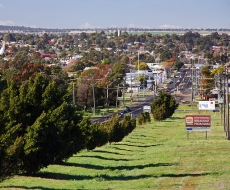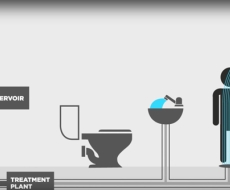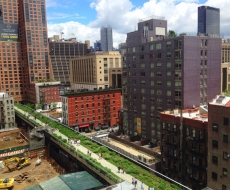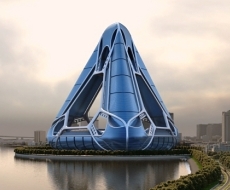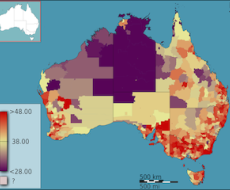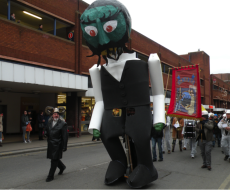Bio-inspired, Human-Built Environments
Is Australia a Suburban Nation?
Greywater & the Rising Case for Re-using Water
Peak Urban: the new city limits
Extreme Built Environments
Good Morning Australian Cities!
Food Planning - Call for Guest Editors
Suburban Space, Suburban Culture, Suburban Myth?

Add Peripheral Centralities: The Lost and Past Urbanity of the Suburbs
The term ‘peripheral centralities’ may seem something of an oxymoron and yet the spatial peripheries of cities have often been more central to urban development processes than is appreciated. To better understand the nature of peripheral centrality, Peripheral Centralities: The Lost and Past Urbanity of the Suburbs brings together a wide variety of examples of lost and forgotten peripheral centralities of different sizes, purpose, geographical location, and political complexion, dating from the first decades of the twentieth century to the present day. Following the introduction, two chapters provide broad overviews of peripheral centralities in international and national systems of centralities. The next four chapters look at plans from settings as different as Dublin as Shanghai that, for one reason or another, failed to materialize. The following eight chapters each describes cases where projects have been realized, ranging from peripheral townships in England to a Chinese steel city. To conclude the book, the editors highlight the themes revealed in the foregoing chapters and consider the part an appreciation of peripheral centralities might play in the development of urban theory from the outside in.
Nicholas A. Phelps is Professor and Chair of Urban Planning and Associate Dean International in the Faculty of Architecture Building and Planning at the University of Melbourne.
Roger Keil is Distinguished Research Professor in the Faculty of Environmental and Urban Change at York University, Toronto and Fellow of Canadian Institute for Advanced Research’s (CIFAR) Humanity’s Urban Future program.
Paul J. Maginn is Director of the Public Policy Institute and an Associate Professor of Urban and Regional Planning at the University of Western Australia, Perth.
Contents
Preface
Introduction: Peripheral Centralities – Lost and Past Nicholas A. Phelps, Roger Keil and Paul Maginn
-
Centres in the Metropolitan Periphery: A Spatial Planning History
Robert Freestone
-
Soviet Sputnik Towns: The Past of a Sustainable Urban Future? Remaking Periphery through Distributing Centrality
Oleg Golubchikov and Irina Ilina
-
Pipedream or Growth Area Benchmark? Berwick’s Metrotown Plan
Victoria Kolankiewicz, David Nichols and Nicholas A. Phelps
-
Flying Boats, Garden Suburbs, Oil Refineries and Motorways – Exploring the Forgotten Twentieth-Century Plans for Dublin Bay
Ruth McManus
-
‘Metropolitan Adelaide’s Unique Opportunity’: Charles Reade’s Plan of Adeladie and Suburbs (1917)
Christine Garnaut
-
Informal Centralities against Fascism: Popular Urbanization in Madrid, 1940s–1970s
Álvaro Sevilla-Buitrago and Noel A. Manzano Gómez
-
The Greater Shanghai Plan (1927–1937): An Unfulfilled Urban Dream
Richard Hu
-
War, Military Settlements, and Planetary (Sub)Urbanization
Gabriel Schwake and Carola Hein
-
Exploring the Emergence of Peripheral Centralities in Bengaluru: The Case of Electronics City
H.S. Sudhira
-
What Peripheral Centrality Does to the City: The ‘EUR neighbourhood’ in Rome, Italy
Marco Cremaschi
-
‘A Bright New World of Convenience, Efficiency, and Plenty’: The Incorporation and Dissolution of Peripheral Mass Public Housing in Newcastle and Dundee, 1960s to 1990s
Andrew Hoolachan and Mark Tewdwr-Jones
-
The Social Ambitions and Failures of Architecture in Oslo’s New Towns of 1950s, 1960s, and 1970s
Per Gunnar Røe
-
Wuhan’s Red Steel City: The Waning Centrality of an Industrial Satellite Town?
Julie T. Miao, Nicholas A. Phelps, Sainan Lin, and Zhigang Li
-
Lost and Peripheral Centralities in the Post-Colony Lessons from West Africa
Laurent Fourchard
-
Conclusion: Histories beyond ‘Methodological Cityism’
Keil, Paul Maginn and Nicholas Phelps

The Evolution of Urban Heritage Conservation and the Role of Raymond Lemaire
Contents
Introduction
-
From Archaeology to Conservation
From Archaeology to ConservationA FAMILY LEGACYTRAINING IN THEORY AND PRACTICEUniversity EducationTraining in the Field: the CGRP and the Ministry of Public WorksBUILDING A NATIONAL AND INTERNATIONAL NETWORKThe Recovery of Looted ArtworksHeritage Protection in WartimeFirst Contacts with ItalyA PERSONAL VISION OF CONSERVATIONRaymond M. Lemaire and the restauro criticoThe St. Lambert Chapel in HeverleeTHE VENICE CONGRESS (1964): A TURNING POINTDrafting the Venice Charter
The Founding of ICOMOS
-
Constructing an Ideal Historic City: The Great Beguinage of Louvain (1962–1972)
A UNIQUE CONTEXTAn Exceptional ‘Traditional’ EnsembleA Tailor-Made ProgrammeA Flexible ScheduleA Great Freedom of ActionTHE VENICE CHARTER PUT TO THE TEST OF THE REHABILITATION OF URBAN ENSEMBLESThe Interiors: Conservation vs ComfortThe Façades: A Radical RestorationThe Additions: From Contrast to IntegrationThe Public Space: A Picturesque VisionA REFLECTIVE PROCESSLessons from Gustavo GiovannoniThe Historic Cities’ ‘Way of Being’ -
Ideal vs Reality: Brussels (1967–1990)
CONTRASTING PRECEDENTS: BRUSSELIZATION AND URBAN SCENERY (1940–1960)Towards a Functionalist CityThe ‘Sacred Blocks’: An Urban SceneryTHE INPUT OF INTERNATIONAL REFLECTIONS AND R.M. LEMAIREThe 1960s: A Gradual AwarenessThe Quartier des Arts: A CatalystA Challenging ContextNEW METHODOLOGICAL TOOLS FOR A NEW VISIONLearning from Eastern European ExperiencesRestoring the Links between People and their Built Environment‘Thinning Out’ and Opening the BlocksSelective Preservation‘Architectural Design in an Old Urban Environment’Correcting the CityscapeTo Conclude
-
Towards a Holistic Approach
R.M. LEMAIRE, A ‘COMPLETE ARCHITECT’THE EMERGENCE OF INTEGRATED CONSERVATIONThe Council of Europe’s Committee on Monuments and SitesNew Doctrinal InstrumentsThe Venice Charter: A Necessary RevisionBruges: A Laboratory for ‘Integral Planning’From Rehabilitation to ‘Retrospective Utopia’Towards Post-Modernism?


